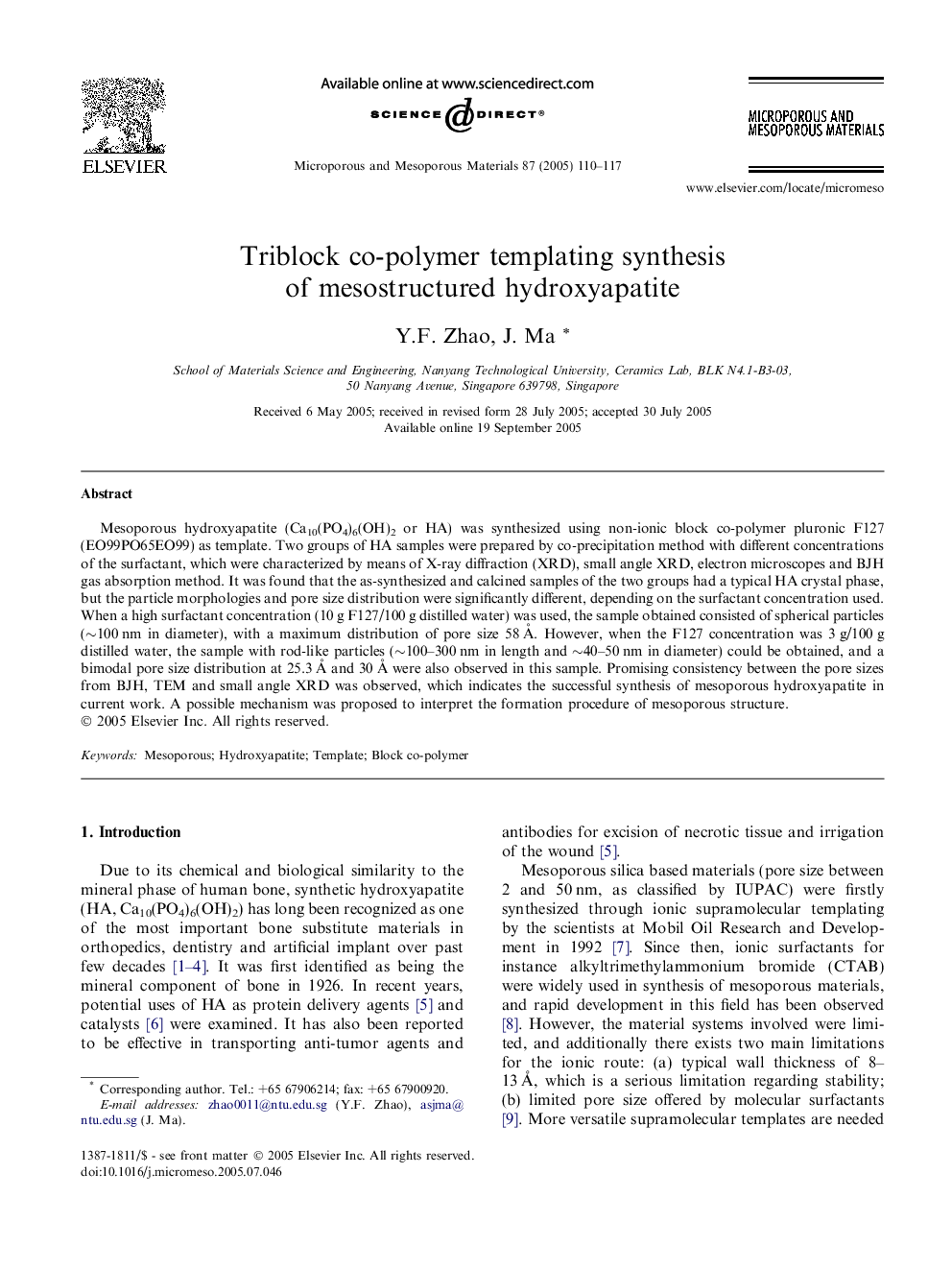| Article ID | Journal | Published Year | Pages | File Type |
|---|---|---|---|---|
| 10247960 | Microporous and Mesoporous Materials | 2005 | 8 Pages |
Abstract
Mesoporous hydroxyapatite (Ca10(PO4)6(OH)2 or HA) was synthesized using non-ionic block co-polymer pluronic F127 (EO99PO65EO99) as template. Two groups of HA samples were prepared by co-precipitation method with different concentrations of the surfactant, which were characterized by means of X-ray diffraction (XRD), small angle XRD, electron microscopes and BJH gas absorption method. It was found that the as-synthesized and calcined samples of the two groups had a typical HA crystal phase, but the particle morphologies and pore size distribution were significantly different, depending on the surfactant concentration used. When a high surfactant concentration (10Â g F127/100Â g distilled water) was used, the sample obtained consisted of spherical particles (â¼100Â nm in diameter), with a maximum distribution of pore size 58Â Ã
. However, when the F127 concentration was 3Â g/100Â g distilled water, the sample with rod-like particles (â¼100-300Â nm in length and â¼40-50Â nm in diameter) could be obtained, and a bimodal pore size distribution at 25.3Â Ã
and 30Â Ã
were also observed in this sample. Promising consistency between the pore sizes from BJH, TEM and small angle XRD was observed, which indicates the successful synthesis of mesoporous hydroxyapatite in current work. A possible mechanism was proposed to interpret the formation procedure of mesoporous structure.
Keywords
Related Topics
Physical Sciences and Engineering
Chemical Engineering
Catalysis
Authors
Y.F. Zhao, J. Ma,
